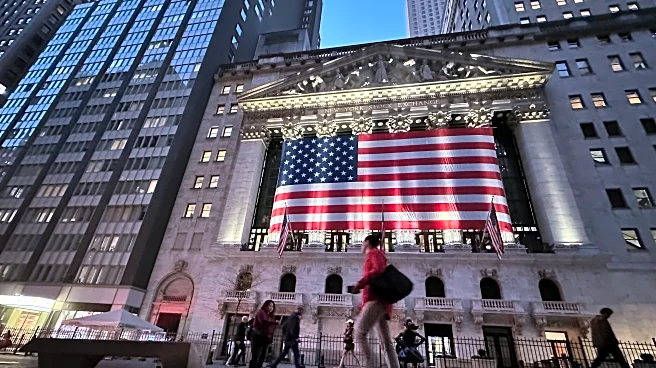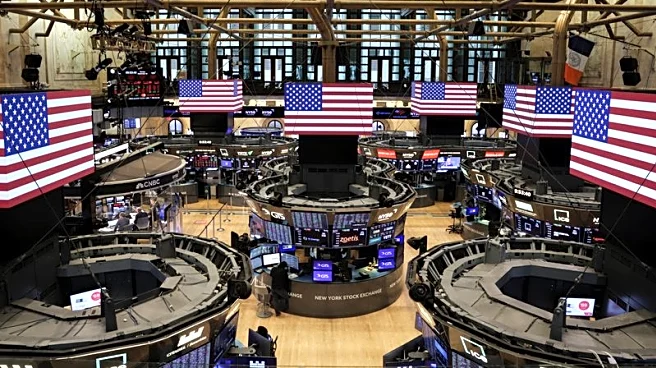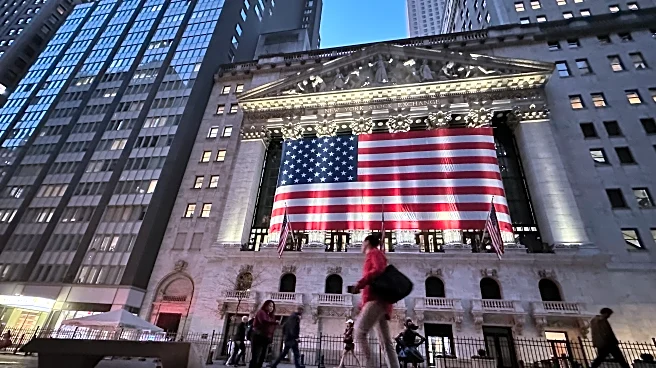What is the story about?
What's Happening?
Morgan Stanley has downgraded Wells Fargo from 'overweight' to 'equal weight', indicating a limited upside potential for the bank's stock. Analyst Betsy Graseck set a new price target of $95, up from $87, which suggests a modest gain of 2.3% from the previous close. The downgrade follows the removal of Wells Fargo's asset cap, a significant event that had previously been seen as a catalyst for faster earnings per share growth. Graseck noted that the next major catalyst for Wells Fargo will be its fiscal year 2026 guidance, expected in January, where the company might raise its return on tangible common equity (ROTCE) target. However, she believes the market has largely anticipated this move. Additionally, Wells Fargo is unlikely to benefit from the Federal Reserve's recent rate-cutting cycle, which could lead to a contraction in net interest margin and lower net interest income estimates for 2026 and 2027.
Why It's Important?
The downgrade by Morgan Stanley highlights potential challenges for Wells Fargo in the current economic climate, particularly in relation to interest rate changes. As the Federal Reserve continues to adjust rates, banks like Wells Fargo may face pressure on their net interest margins, impacting profitability. This development is significant for investors and stakeholders in the financial sector, as it may influence investment strategies and expectations for bank performance. Despite the downgrade, a majority of analysts remain bullish on Wells Fargo, with 17 out of 26 rating the stock as a buy or strong buy. This mixed sentiment reflects the complexities of navigating the banking sector amid shifting economic policies and market conditions.
What's Next?
Wells Fargo is expected to provide its fiscal year 2026 guidance in January, which could serve as a pivotal moment for the bank's stock performance. Investors will be closely watching for any adjustments to the ROTCE target, as well as the company's strategies to mitigate the impact of interest rate changes. The broader financial community will also be monitoring the Federal Reserve's actions, as further rate cuts could continue to affect banks' net interest margins. Stakeholders may need to reassess their positions based on these developments, considering both the potential risks and opportunities in the evolving economic landscape.
Beyond the Headlines
The downgrade and its implications for Wells Fargo underscore the broader challenges faced by the banking industry in adapting to regulatory changes and economic shifts. The removal of the asset cap was a significant regulatory milestone, yet the anticipated benefits may be tempered by external factors such as interest rate policies. This situation highlights the delicate balance banks must maintain between regulatory compliance and market performance. Additionally, the focus on ROTCE and net interest margins reflects the ongoing importance of profitability metrics in evaluating bank health and investor confidence.
AI Generated Content
Do you find this article useful?















